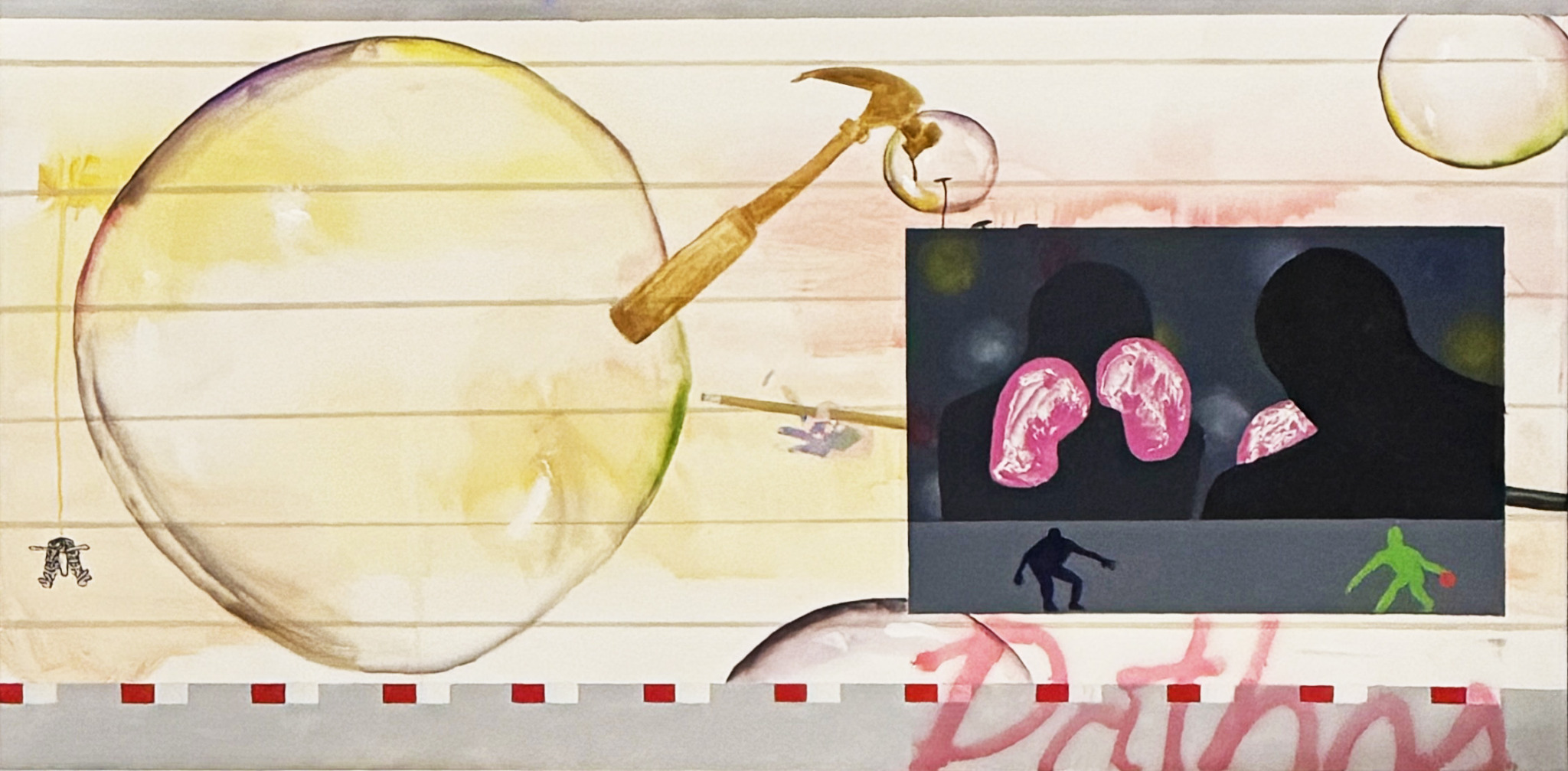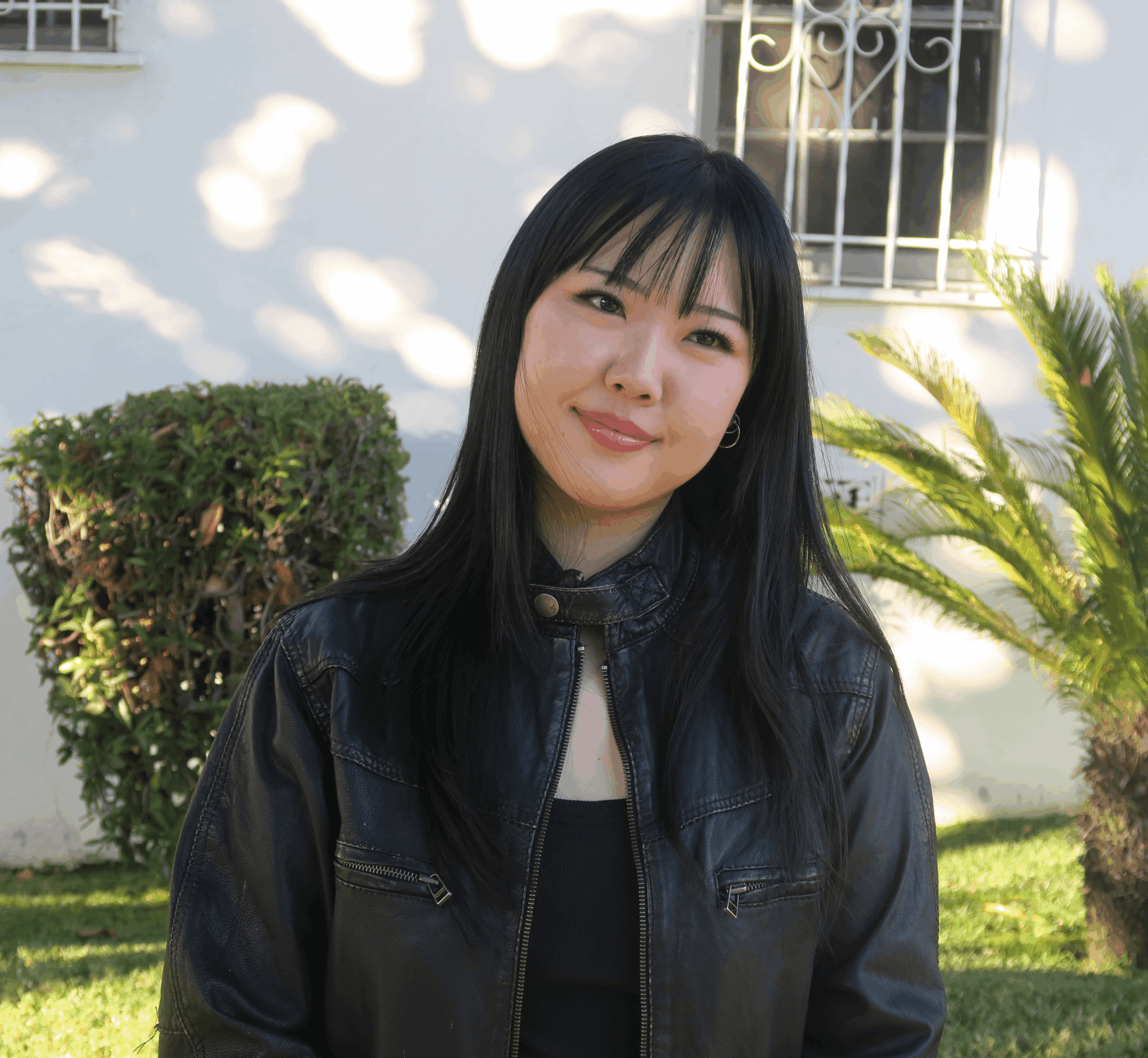We recently connected with Kaylee Kim and have shared our conversation below.
Kaylee, thanks for joining us, excited to have you contributing your stories and insights. Can you open up about a risk you’ve taken – what it was like taking that risk, why you took the risk and how it turned out?
In a way, choosing to pursue art was one of the biggest risks I’ve taken. Medicine and business runs in my family and, for a while, I tried convincing myself STEM was right for me. I grew up in predominately Asian and suburban cities where it was easy to blend in and I ignored my hobbies and interests that came from alternative or “nerdy” scenes. I joined a technology based track in high school as well as the robotic’s team (where, granted, I worked on publicity rather than engineering). At some point in high school, I was drawing while waiting for classes to start and, as cliche as it sounds, I had an epiphany where I realized I could do this for the rest of my life. In all the chaos of teenage emotional turbulence and tense relationships, I found my happiness and peace in drawing. The burdensome part was telling my family, and though they became supportive shortly after I told them, they were genuinely concerned for my future which I can understand. Although I label this risk as “choosing to pursue art,” if anything, my biggest risk was choosing to lean in, listen to myself, and going against the pressures put onto me by my family, friends, or classmates. Wearing objectively bad outfits, skateboarding in dead silent neighborhoods, and falling asleep to emo music all led me to being more authentically myself today.
Although I didn’t know anything about the responsibilities of being an artist when I decided to dedicate my foreseeable future to it, it has all trickled down, day by day, to the person I am today. Learning about the world through this unique lens has changed my perception on the everyday and mundane. I have become more sensitive to the world around me and I am always observing. I find little beauties in everything around me and suddenly my environment becomes a source material for me. I think living as a creative person allows me to be empathetic and honest, not just in terms of art, but as a human being. My art and my life/who I am as a person is almost never separated and they cannot really exist without each other, as pretentious as it sounds.


Kaylee, before we move on to more of these sorts of questions, can you take some time to bring our readers up to speed on you and what you do?
My name is Kaylee Kim and I am primarily an artist and designer based in Los Angeles. I am currently studying for my BFA in Illustration from ArtCenter College of Design in Pasadena. As a child, I have always loved drawing, and because my father is a landscape architect, I was always surrounded by huge marker drawings done on tracing paper or 3D models made of wires and cardboard. Naturally, I started drawing and I had an obsession with dragonflies, at least that’s all I really remember drawing. Though I was not actively pursuing art until high school, I always drew and fell in love with video games and their character designs as well as movies such as Star Wars and Spiderman. At ArtCenter, my work took a turn and I became heavily inspired by graphic design, fine art, and collage work which is where my work stands now. I am interested in a wide variety of subjects and have had the privilege of being in competitive academic environments since middle school which have allowed me to become knowledgeable and aware of multiple topics. My many (sometimes random) interests have sort of acted as a collage that make me who I am and I think in translates to my work.
I believe that my work implements elements of collage and drawing that call to a fresh expression of image making. I am often cutting papers, specifically origami papers or little icons I find interesting, using word play, and incorporating elements from cross-disciplinary subjects such as math or science. I use a variety of mediums such as pencil, marker, acrylic and oil paint, airbrush, collage, and ink. I spend a lot of time designing a page. I am constantly thinking of my color and value and what kind of language a mark will communicate. While I do allow my formal skills to shine through here and there, I also like to find interesting ways to create sorts of riddles within my images. A lot of my subject matter is inspired by my own life, what I’ve seen, music, movies, literature, philosophy, and humor.
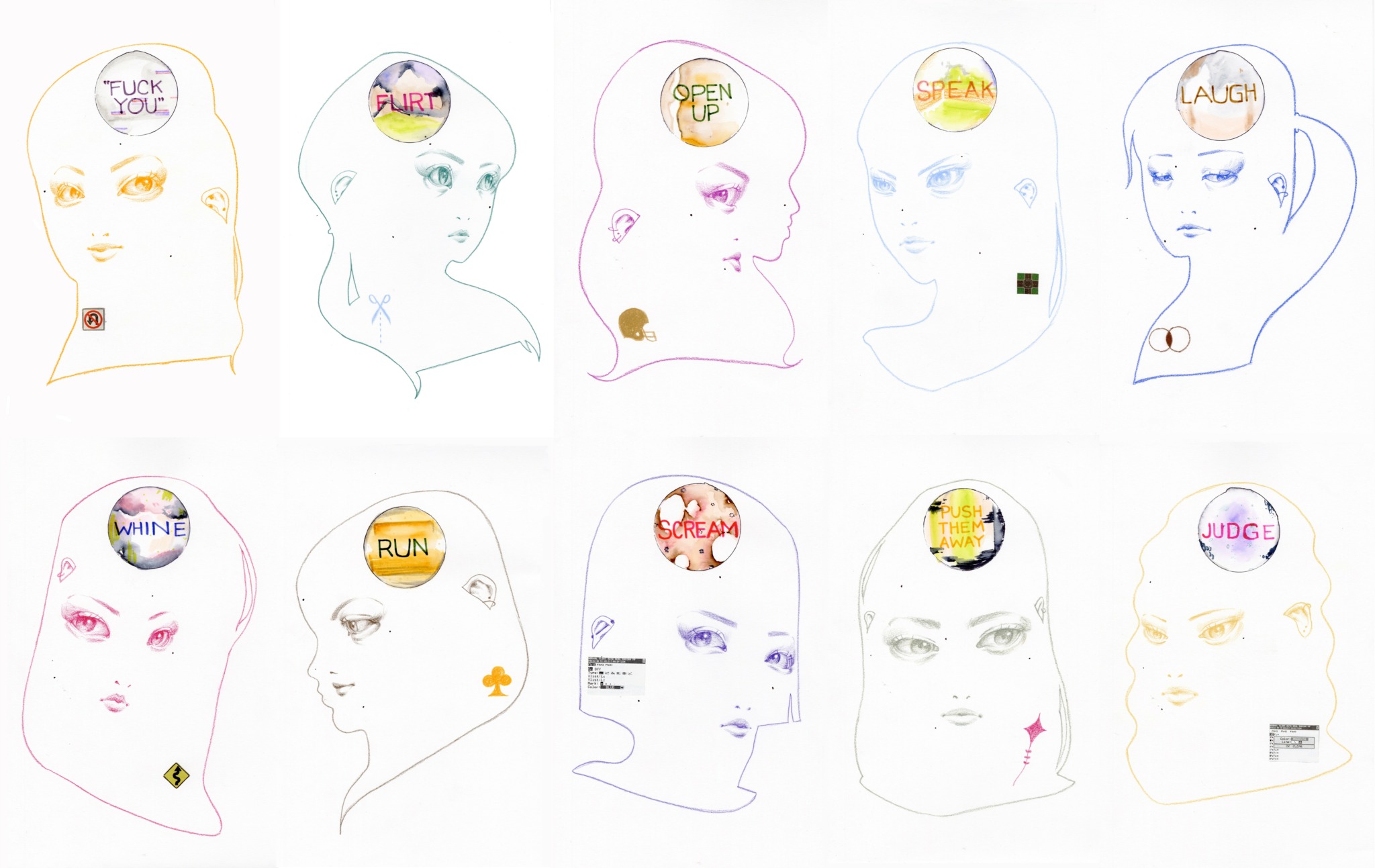
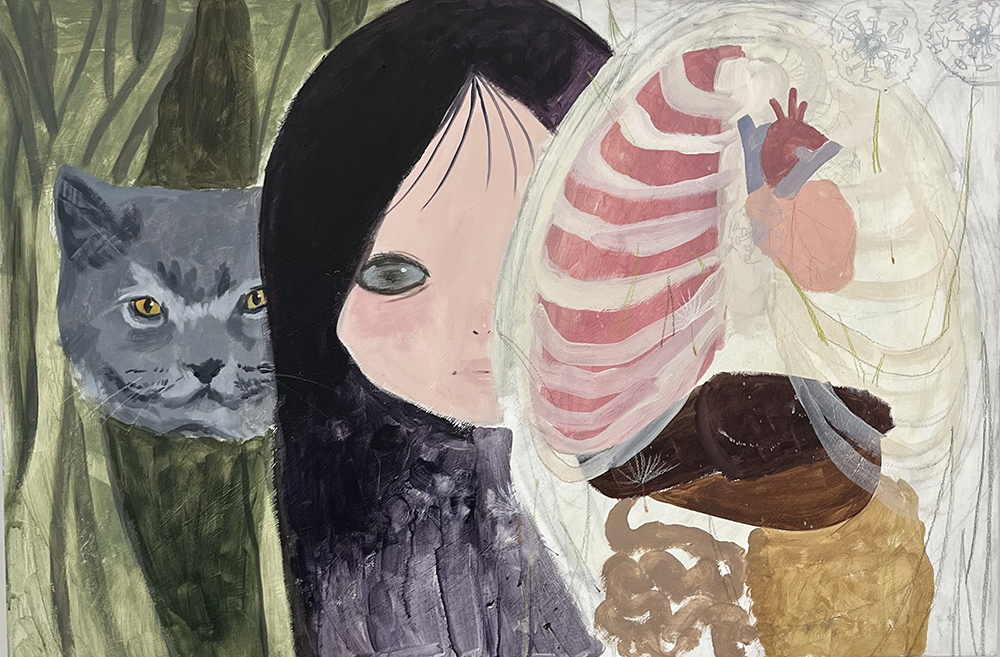
Do you think there is something that non-creatives might struggle to understand about your journey as a creative? Maybe you can shed some light?
I think I’ve personally had to explain to a lot of people that the creative process is pretty mentally and emotionally taxing. Sometimes you have amazing ideas and then you start to flush them out and it turns out pretty horrendous and you need to scrap it. Or you have a sketch that you can’t execute to your satisfaction because your skill or knowledge hasn’t caught up to you yet. Other times, you cannot think of an idea to save you. There are also times where you commit to your idea because you believe in it and it takes hours of work. It becomes personal and it can become a mind game. Art and design isn’t graded in the same way exams are graded where you get an A if you get the answers right, which is one of the most freeing, but also most frustrating parts of being creative. Since a drawing or poster or print etc. is a standalone image, what I’ve observed that the average person only sees the final results and not the many hours of what goes into it (which is what other creative people see). Simply put, it is a lot of time and commitment and believing in yourself is its mountain to climb on its own. I am not asking for sympathy, just respect for what I do.
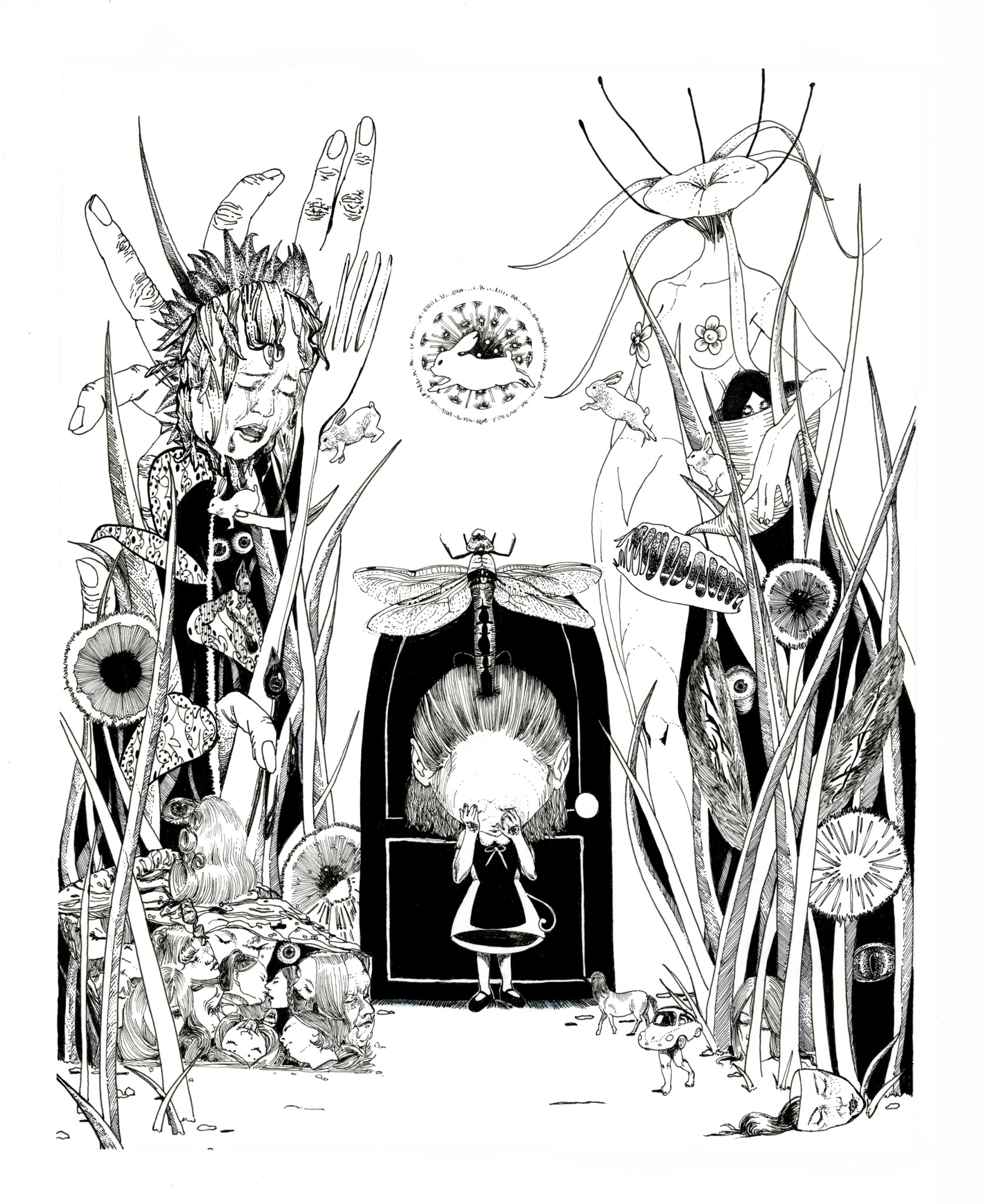

We often hear about learning lessons – but just as important is unlearning lessons. Have you ever had to unlearn a lesson?
A lesson I unlearned was believing too much in sayings. Something I found funny in my foundation year of college was that the teachers were always saying different things or contradicting what the others were saying. Some said design matters, others said design is the core of an image. I thought it was humorous that teachers in the same college weren’t consistent because not every artist is the same either. Since it’s been a few years since I stopped believing in common art sayings, I can’t really remember an example. They’re sort of like “never do this, because X is always going to be Y.” Absolutes are something I try to stay away from because you never know when something is or isn’t going to work until you try it. People have broken these “art rules” and images work. Learning to trust my own eye while listening intently to others’ critique is what I find works the best for me, instead of prematurely limiting myself because I abide to an “art rule.”
Contact Info:
- Website: https://sunkyook.myportfolio.com
- Instagram: https://www.instagram.com/sunkyook/

